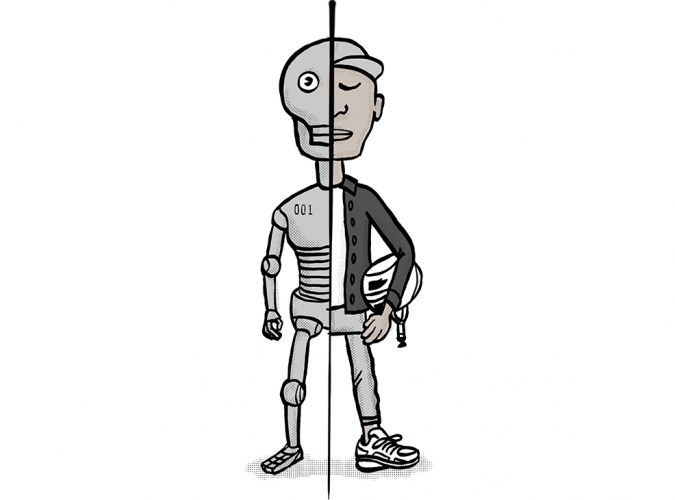The availability of human-centric information through big data is an amazing thing. However, brands that grasp it too tightly are contributing to the noisy, mechanical landscape of marketing and advertising. We’ve spent so much time worrying about reaching people as often as we can that we’ve forgotten how to make these valuable human interactions, well, valuable. At the end of the day, becoming a people-centric brand might be as simple as changing your morning routine. Try forgetting about spreadsheets and data for an hour and, instead, have your morning coffee with room for cream and conversation—sit with your audiences, ask questions, listen, and communicate with the individuals you want to connect with.
We tend to think of B2C and B2B as precisely what the acronyms suggest: a business transacting with consumers and other businesses. The brands that make the shift from Business-to-Consumer toward People-to-People (P2P) are the brands that have a distinct personality and human traits. Unsurprisingly, their compelling marketing executions create tribes of outspoken advocates celebrating their P2P relationships.

These brands go beyond spreadsheets and acquire a deeper understanding of their people—the individuals and groups who have bought into their brand’s personality because it matches their own. These brands use interactions with their audiences as an opportunity to speak with people, not at consumers. Admittedly, this is challenging, but it’s a shift that’s entirely attainable.
The first step in the journey of becoming a people-first brand is to understand who your audience(s) is (are). While segmentation and personas filled with ages, demographics, and other quantitative data provide valuable insight, we still don’t know them. Consider your best friend or favorite co-worker. Do you think of this person as male/female, 25-35, with an income of $50-$75K? Or do they base their identity on self-expressions of vintage style, being unapologetically original, and feeling the most alive on speed-induced adventures? Getting to know people means learning their identity-based motivations, what they dream about and value. These are the insights we are in search of if we (marketers) want to deliver valuable interactions and creative executions that connect with living, breathing humans.
These seem like challenging insights to uncover. But remember that cup of coffee—the one you’ll have with cream and conversation. Immersive forms of qualitative research offer a chance to discover information that’s overflowing with real humanity. Marketing researchers who can probe the mind, explore intriguing responses, and allow a degree of calculated derailment can deliver great creative insight. While we should use data-driven insights as much as possible, qualitative research is necessary to stop thinking of your consumers as consumers and start thinking about them as people.

The B2C to P2P transformation has begun, but don’t get stuck in limbo. You need both sides of this equation to be a human-centric brand. The other half requires that your brand shows up and takes action in human ways.
You’ve probably heard that you don’t control your brand, people do. There’s an essential piece of information to unpack in that statement. It’s in our nature as humans to make sense of things by assigning them characteristics of people. In the same way that we might describe a house as friendly, welcoming, and full of character, we do the same with brands. When people control your brand, they assign it human traits. They personify your brand for you whether you like it or not.

What every brand may not have is a team of employees that have bought into the idea of brand personification. The brands and teams that do are capturing experiences, telling stories of their ambassadors and advocates, and activating in physical spaces to form real relationships with actual people. These actions espouse their brand in entirely human ways. They’re showing who they are in ways that people interpret information which makes it easy for them to understand who the brand wants to be.
Treating your brand as a living entity makes communication incredibly intuitive. While the reach of traditional media is still significant to increase and retain awareness, as we attempt to create loyalty and advocacy, the people-to-people approach needs to take the wheel. To persuade people to do business with us (because they value our relationship and what our brands say about them), maybe it’s as simple as thinking about our favorite personal interactions. Tell stories, ask questions, give access to real experiences, and listen to people. Don’t overcomplicate the process.
